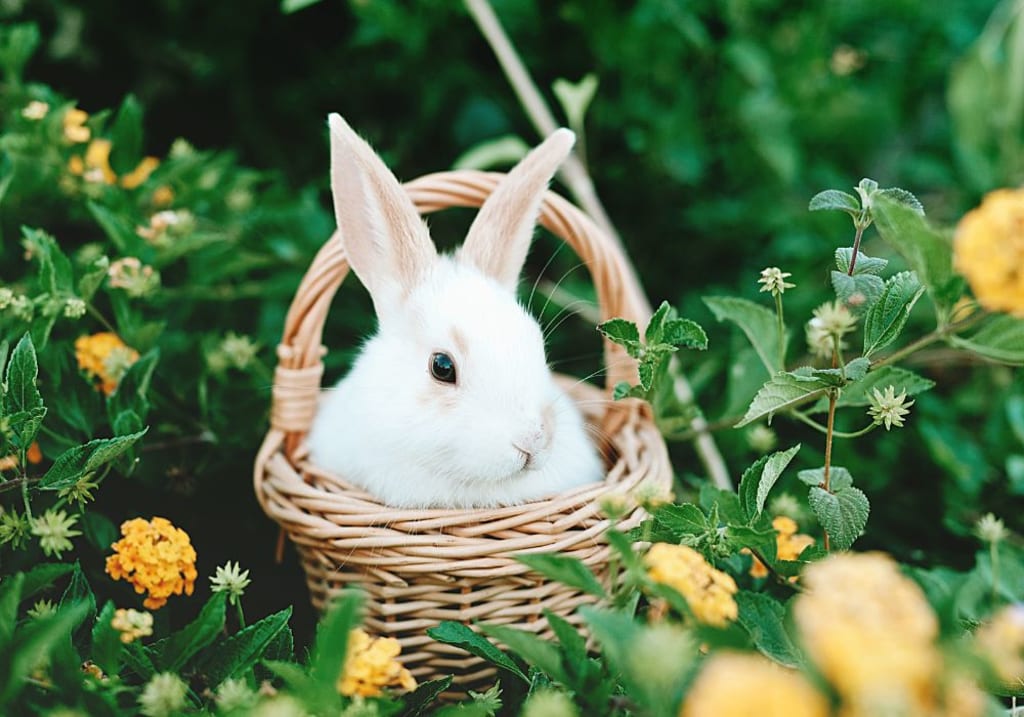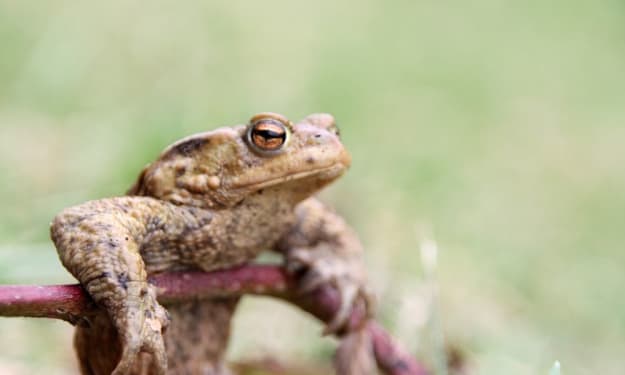How to Recognize and Prevent Obesity in Rabbits
A Complete Guide

Rabbits are beloved pets known for their cute button noses, fluffy tails, and mischievous personalities. However, one serious health issue that many rabbit owners may not be aware of is obesity. Just like humans, rabbits can become overweight or obese, which can lead to a host of health problems and a decreased quality of life.
In this comprehensive guide, we'll dive deep into the topic of rabbit obesity - how to identify it, what causes it, and most importantly, how to prevent it. We'll provide actionable steps and expert tips to help you keep your rabbit at a healthy weight and avoid the dangers of obesity. By the end, you'll have all the knowledge you need to recognize the signs of obesity in rabbits and take proactive measures to keep your furry friend fit and happy for years to come.
What is Rabbit Obesity?
Obesity in rabbits is defined as having an abnormally high amount of body fat that can negatively impact health. Just like in humans, obesity in rabbits is caused by consuming more calories than the body burns. This excess energy gets stored as fat, leading to weight gain.
Rabbits are considered obese when they weigh 15-20% more than their ideal body weight. However, it's important to note that weight alone is not always an accurate indicator of obesity. Some rabbits may be overweight but have a healthy body condition, while others may appear thin but have a high percentage of body fat. That's why it's crucial to assess your rabbit's overall body condition, not just their weight on the scale.
Causes of Obesity in Rabbits
There are several factors that can contribute to obesity in rabbits:
- Diet: Feeding your rabbit too many high-calorie foods like treats, seeds, nuts, or sugary fruits can lead to weight gain. Providing an unbalanced diet that's too high in calories and low in fiber can also cause obesity.
- Lack of exercise: Rabbits need plenty of space to run, jump, and play in order to stay fit. If a rabbit doesn't get enough exercise due to living in a small cage or being confined to one area, they are more likely to become overweight.
- Neutering/spaying: While spaying and neutering is important for population control and can have health benefits, it can also lead to a slower metabolism and increased appetite in some rabbits, making them more prone to weight gain.
- Age: Older rabbits tend to be less active and may have a slower metabolism, putting them at higher risk for obesity as they get older.
- Genetics: Some rabbits may be predisposed to obesity due to their genetics and natural tendency to gain weight more easily.
Dangers of Rabbit Obesity
Obesity in rabbits is not just a cosmetic issue - it can have serious health consequences and negatively impact a rabbit's quality of life. Some of the dangers of obesity in rabbits include:
- Hepatic lipidosis (fatty liver disease): This life-threatening condition occurs when excess fat accumulates in the liver, causing organ damage and failure. Obese rabbits are at much higher risk of developing hepatic lipidosis.
- Sore hocks: The extra weight puts pressure on a rabbit's feet and can lead to painful sores and ulcers on the hocks (ankles). This makes it difficult and painful for the rabbit to move around.
- Joint and muscle problems: Obesity strains a rabbit's joints and muscles, leading to arthritis, muscle weakness, and decreased mobility. Overweight rabbits are also at higher risk of spinal injuries.
- Heat intolerance: Obese rabbits have a harder time regulating their body temperature and are more prone to heat exhaustion and heat stroke, especially in warm weather.
- Decreased lifespan: Obesity significantly reduces a rabbit's lifespan. Obese rabbits have a much higher risk of developing fatal health issues like organ failure and heart disease.
How to Recognize Obesity in Rabbits
So how can you tell if your rabbit is overweight or obese? Here are some key signs to look for:
- Visually assess your rabbit's body condition. When looking at your rabbit from above, you should be able to see a slight waistline behind the ribcage. From the side, your rabbit's belly should tuck up slightly. If your rabbit looks round and barrel-shaped, they are likely overweight.
- Feel your rabbit's body. Run your hands along your rabbit's sides. You should be able to feel their ribs with a slight layer of fat over them. If you can't feel the ribs at all, or if there is a thick layer of fat, your rabbit is obese.
- Look for fat deposits. Check for fat pads around your rabbit's neck, at the base of the tail, and on the hind legs. Excessive fat in these areas is a sign of obesity.
- Monitor your rabbit's weight. Weigh your rabbit regularly and keep track of their weight over time. A sudden or gradual weight gain, especially if your rabbit is gaining more than 1-2 oz per week, could indicate obesity.
- Observe your rabbit's activity level. Obese rabbits tend to be less active, playful, and energetic than healthy rabbits. If your rabbit seems reluctant to move around or exercise, it may be due to excess weight.
- If you notice any of these signs in your rabbit, it's important to take action to help them lose weight and get back to a healthy body condition. Consult with your veterinarian to determine your rabbit's ideal weight range and develop a safe weight loss plan.
How to Prevent Obesity in Rabbits
The best way to avoid the dangers of rabbit obesity is to prevent it from happening in the first place. Here are some key steps you can take to keep your rabbit at a healthy weight:
- Feed a high-fiber, low-calorie diet. Hay should make up the majority of your rabbit's diet, providing essential fiber. Provide unlimited access to timothy, orchard grass, or oat hay. Pellets should be limited to 1/4 to 1/2 cup per 4 lbs of body weight per day, depending on your rabbit's size and activity level. Avoid sugary treats and limit fresh vegetables and fruits to small amounts.
- Provide plenty of space for exercise. Rabbits need a large enclosure with room to run, jump, and play. Ideally, they should have access to a rabbit-proofed room or exercise pen for several hours a day. Provide toys and obstacles to encourage activity.
- Encourage natural behaviors. Rabbits are natural foragers. Scatter hay and healthy treats around their enclosure to encourage foraging and exercise. Provide chew toys to satisfy their need to chew.
- Consider spaying/neutering. While spaying and neutering can lead to weight gain in some rabbits, it's still recommended to prevent unwanted litters and reduce aggression. Work with your vet to monitor your rabbit's weight and adjust their diet if needed after the procedure.
- Weigh your rabbit regularly. Weigh your rabbit at least once a month and keep track of their weight. Catching even a small amount of weight gain early can help you make diet and exercise adjustments before obesity develops.
- Schedule regular vet checkups. Annual wellness exams allow your vet to assess your rabbit's body condition, weight, and overall health. They can provide personalized advice on maintaining a healthy weight.
- By following these preventive measures and working closely with your veterinarian, you can help ensure your rabbit stays at a healthy weight and avoids the serious health risks associated with obesity. Remember, a fit rabbit is a happy rabbit!
Conclusion
Obesity is a serious health issue that can significantly impact a rabbit's quality of life and lifespan. By understanding the causes, dangers, and signs of obesity in rabbits, you can take proactive steps to keep your furry friend at a healthy weight.
Provide a high-fiber, low-calorie diet, plenty of space for exercise, and regular vet checkups. With a little extra care and attention, you can help prevent obesity and ensure your rabbit lives a long, happy, and healthy life by your side.
About the Creator
Hasan
Welcome...
In this site of mine you can learn amazing things and many information that you don't know so please subscribe to my site.
Enjoyed the story? Support the Creator.
Subscribe for free to receive all their stories in your feed. You could also pledge your support or give them a one-off tip, letting them know you appreciate their work.






Comments
There are no comments for this story
Be the first to respond and start the conversation.